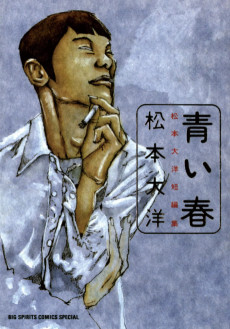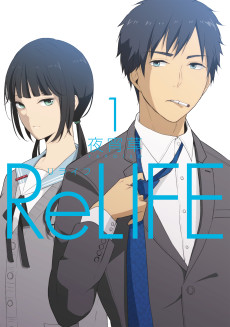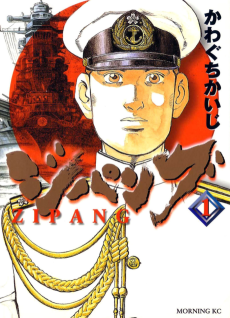HARUKA NA MACHI E
STATUS
COMPLETE
VOLUMES
2
RELEASE
November 25, 1999
CHAPTERS
16
DESCRIPTION
Who hasn't thought about reliving their past, correcting perceived mistakes or changing crucial decisions? Would this better your life or the lives of those closest to you? Or would your altered actions prove even more harmful? One man gets the chance to find out...
Middle-aged Hiroshi Nakahara is on his way home from a business trip when he finds himself on the wrong train heading for his childhood hometown. His footsteps take him to his mother's grave and it's there that he is catapulted back into his life as an 8th grader - but with all his adult memories and knowledge intact. As he struggles to make sense of his predicament his adult memories of his childhood return but are somehow subtly changed. The questions start to form ... would his father still disappear without explanation? would he still marry his wife?
(Source: Ponent Mon)
CAST
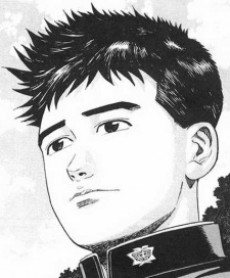
Hiroshi Nakahara
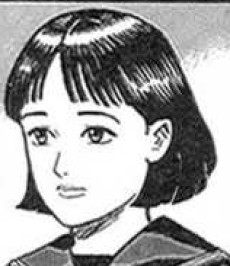
Tomoko Nagase

Yoshio Nakahara
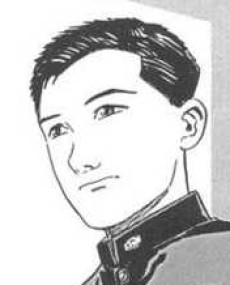
Daisuke Shimada
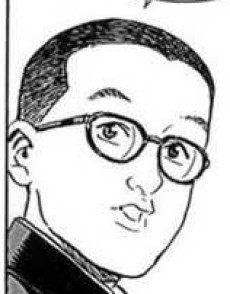
Takeshi Hamada
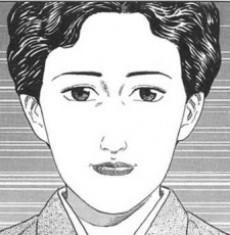
Kazue Nakahara
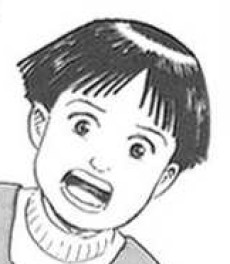
Kyoko Nakahara
CHAPTERS
REVIEWS

Fleur
90/100Perception is powerful – it can and does change everything.Continue on AniListTaniguchi often reads like some of the old impressionistic writers. Form, time, direction all seem to have their own shape; they breathe on their own accord. The world then is distilled down to sensory syllogisms, in which truth and fiction really are just extensions of one another. Consequently, all that seems to matter is the continuity of perception and the exaltation of sense, transforming into ephemeral experiences embedded in some forgotten psychology. These are never presented as factual, but as fleeting moments offering glimpses into all that was lost. These stories are appendages of the self: ones that serve to internalize the world and externalize the individual - ones solely predicated on perspective. What is seen, what is felt, and what “is” are all units crafted by an ever-changing reality, shifting not only in a temporal space but within the abstract confines of the mind. Perception is powerful.
Nothing encompasses the aforesaid more than Taniguchi’s acclaimed manga "Haruka na Machi e", or otherwise known as "A Distant Neighborhood." It’s a work that seems to override traditional form and structure while challenging linearity and time to bring forth a compelling narrative with stunning artwork.
Before discussing the actual story, Taniguchi’s art in this manga must be mentioned. As striking and thought-provoking as the story is, the art is sublime. Taniguchi draws with a sense of realism and nostalgia – a style that suits this story almost perfectly. His stories often feel like meditations or Zen-like introspections of the mind exercising itself onto the world. The moments in between that are being grasped, coalesced, and digested by the senses and cognition are expressed poetically and with the utmost clarity. Expressions, space, distance, textures, gradients, forefront, backgrounds are crafted with an unreal degree of precision and artistry. The narrative is thoroughly rooted in the art and its often through the art and imagery that much of the progression takes place.
Additionally, the story is equally compelling.
The premise starts off deceptively simple: a 40-something everyday salaryman (Hiroshi Nakahara) takes the wrong train. He notices the scenery changing into something unknowingly nostalgic. Eventually, he ends up in his childhood town.
Things have changed.
He too has changed.
The streets he once knew are unrecognizable. His old home and parent’s shop have also disappeared. Unsettled, he goes to pay respect at his mother’s grave. He falls asleep and upon waking, strangely finds himself transported many decades into the past – when he was only 14.
Again, the streets change. Again, he changes.
From this point onwards, the story focuses on Hiroshi’s decisions to change both, his world and of those that once inhabited it. He still retains all his knowledge and skills as an adult, and so embarks on his second chance to redeem his past and perhaps his future. HaruMachi confidently conveys the complex completeness of each emotion and conflict. Taniguchi exerts complete control over the intricacies and depth and subtly reveals them through intuition and imagery. Hiroshi encounters the same interactions and events but tries to alter them to get more optimal outcomes, whether it be finding love with the prettiest girl in school or helping his frail mother. Yet the focus is never on the meaning of these interactions or how they will change Hiroshi’s life. The future has already transpired. What’s important is Hiroshi’s inevitable realizations about himself and his place in the world. What’s hidden beyond the entirety of this current timeline is push for acceptance, through understanding all that/those he could not and did not.
Thus, this is not an exciting time travel story. This is not a narrative hung up on changing the future. Time and history are all living; dismissing their autonomy is out of the question. What then HaruMachi sublimely shows is the opposite: despite the feigned ability to change things within a repeated microcosm, in the grand scheme of cosmic affairs, things will remain as they need be. What matters is perception and how that perception evolves into awareness (and to inherit the ability to alter that as needed, to live, if not with contentment, then at least with acceptance).
The ideas about self-awareness and acceptance echo across the work. These arise from an ethos of a society that is designed to discourage individualistic fervors and the results of such a design on the individual questioning it through their own existence. This is truly where the art shines. Much of the initial set up is Hiroshi traversing his environment while recollecting and subconsciously, lamenting. Taniguchi crafts the slivering pieces of the past, through the elaborate, naturalistic setting as it was and as it is, revealing the bridge between Hiroshi’s memories and his emotions. Both are at risk but impeccably visualized through the transitioning realities that Hiroshi experiences. It’s remarkable how each idea is translated into an image, from the sweeping scenery to the colliding characters. It’s all attuned to create an atmosphere that moves alongside fate, never to rebel against it, but always to affirm it.
There are two crucial events that reinforce the established nature. First is the eventual breakup of Hiroshi and pretty girl, Tomoko. Second, is his father’s abandonment. The most defining and personal event for Hiroshi seems to be his relationship with Tomoko. She was the prettiest girl in the school and in the original timeline, has married a diplomat and moved abroad. During Hiroshi’s “redo” he impresses her with his maturity and knowledge and they start dating. Tomoko falls hard for Hiroshi, but slowly recognizes the fact that she simply cannot understanding him or his feelings. Their relationship is thoroughly developed and despite her being smitten with him, she becomes increasingly upset and insecure due to her inabilities. She runs away. And so, ends that romance, as well as any hope for finding love and fulfillment in his future family life.
Second and arguably, the most important event in Hiroshi’s redo is the unchanging event of his father’s sudden departure. It is explained that at some point in his 14th year, Hiroshi’s father abandons them, which implicitly causes the early death of his mother. Reliving his life, Hiroshi comes to realize his premature understanding of his parents and their lives. He wants to save his family. He wants to protect his mother. He wants to know why his father abandons his perfectly stable life and loving family. On the night his father is meant to leave, Hiroshi confronts him and demands an explanation. His father wants something more; he wants to escape the never-ending, looming existential dread and to find something life-affirming. This poignantly captures the reasoning for the time-skip and the internal truth that haunted Hiroshi from the get-go.
He too suffers the same dread as his father. Forced into a life of unfulfillment, where neither his family nor his job offers any solace, he finds himself “escaping”. The time skip thus is a mere tool, one that he embraces fully, to live out his teenage desires where he knew he had concrete goals and desires that could lead to happiness, regardless of their impermanence. This duality of change and stasis is heavily manipulated throughout the story, but they are also simply tools for attaining the awareness needed to realize the limitations of self-imposed control and influence. And so, he unsurprisingly returns to his original timeline.
Again, he changes.
In spite of changing many events in his “redo”, things in the present are as they were. Nothing is different. Tomoko is still married to the diplomat, living abroad. His wife and children are who they were prior to him leaving. Friends and family who were dead are still dead. He’s still a 48-year-old everyday salaryman with a heavy heart. Nothing changed, except now he’s fully self-aware. Nothing evolved except his perceptions and his resolve. Ultimately, that’s what matters. After all,
Perception is powerful – it can and does change everything.____# #
SIMILAR MANGAS YOU MAY LIKE
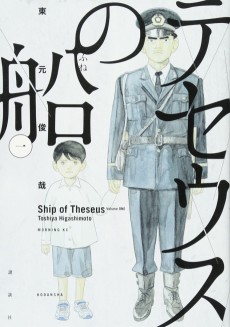 MANGA DramaTheseus no Fune
MANGA DramaTheseus no Fune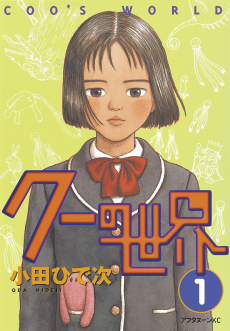 MANGA AdventureCoo no Sekai
MANGA AdventureCoo no Sekai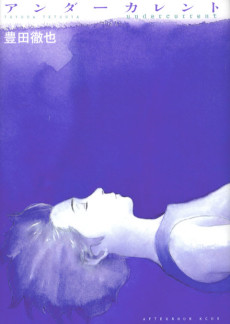 MANGA DramaUndercurrent
MANGA DramaUndercurrent MANGA ComedyHaipoji HIGH POSITION
MANGA ComedyHaipoji HIGH POSITION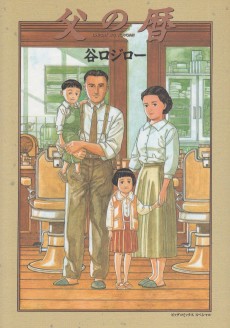 MANGA Slice of LifeChichi no Koyomi
MANGA Slice of LifeChichi no Koyomi MANGA AdventureKamigami no Itadaki
MANGA AdventureKamigami no Itadaki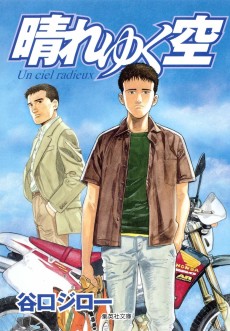 MANGA DramaHare Yuku Sora
MANGA DramaHare Yuku Sora
SCORE
- (3.9/5)
MORE INFO
Ended inNovember 25, 1999
Favorited by 276 Users

